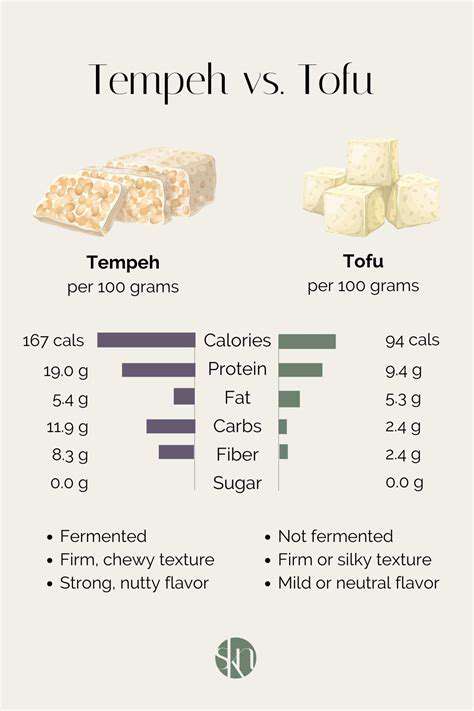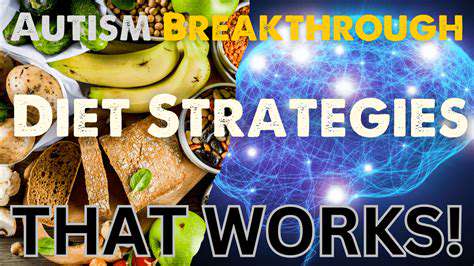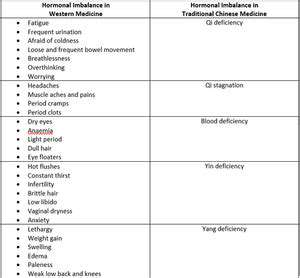TCM for Insomnia: Restoring Peaceful Sleep Naturally
The Importance of the Five Elements in TCM
Traditional Chinese Medicine (TCM) views the body as a complex interconnected system, with the Five Elements – Wood, Fire, Earth, Metal, and Water – playing a crucial role in maintaining balance and harmony. Each element governs specific physiological functions, emotions, and organ systems. Understanding these connections is essential for understanding how imbalances within the elements can contribute to sleep disturbances and insomnia. Recognizing patterns of imbalance is a key aspect of TCM's approach to restoring peace and well-being.
Wood Element and Sleep: The Need for Growth and Creativity
The Wood element, associated with the liver and gallbladder, governs growth, development, and creativity. Imbalances in this element can manifest as restlessness, anxiety, and difficulty falling asleep. Individuals experiencing these issues may find themselves preoccupied with thoughts and anxieties, making it challenging to quiet the mind and enter a state of relaxation necessary for sleep. Practicing calming activities like gentle yoga or tai chi can help restore balance to the Wood element and promote better sleep.
Wood element imbalances often manifest as irritability, frustration, and difficulty releasing the day's stresses. This can make it hard to quiet the mind for sleep. Restoring balance in this element is crucial for establishing a peaceful sleep routine.
Fire Element and Sleep: Balancing Energy and Emotions
The Fire element, associated with the heart and small intestine, governs energy, passion, and emotions. An imbalance in the Fire element can lead to racing thoughts, anxiety, and difficulty falling asleep. This element is particularly important for regulating the body's natural circadian rhythm. If the Fire element is out of balance, it can disrupt the body's ability to transition into a state of rest. This can manifest as insomnia, waking up frequently during the night, or experiencing vivid dreams.
Earth Element and Sleep: Nourishment and Stability
The Earth element, associated with the spleen and stomach, governs nourishment, digestion, and stability. Imbalances in this element can lead to digestive issues, bloating, and difficulty falling asleep. A healthy digestive system is crucial for restful sleep. If digestion is compromised, the body may not be able to effectively process nutrients and energy, leading to feelings of unease and restlessness that interfere with sleep. Addressing dietary imbalances and promoting healthy digestion can significantly improve sleep quality.
Metal Element and Sleep: Letting Go and Relaxation
The Metal element, associated with the lungs and large intestine, governs letting go, relaxation, and emotional release. Imbalances in this element can manifest as difficulty letting go of anxieties, tension, and irritability, all of which can hinder sleep. Practicing relaxation techniques, such as deep breathing exercises or meditation, can help restore balance to the Metal element and promote relaxation necessary for a peaceful night's sleep. A calm mind is essential for achieving a state of rest, and addressing any mental or emotional stress can improve your chances of a good night's sleep.
Acupuncture and Herbal Remedies for Natural Sleep Support

Acupuncture: A Traditional Chinese Medicine Approach
Acupuncture, a cornerstone of Traditional Chinese Medicine (TCM), involves inserting thin needles into specific points on the body. These points, believed to be connected by energy pathways called meridians, are thought to restore balance and flow of vital energy (Qi) when disrupted. Practitioners aim to alleviate pain, manage various health conditions, and promote overall well-being through this precise insertion and manipulation of needles. Acupuncture is a complex practice with a rich history and is widely used around the world.
The underlying philosophy of acupuncture is deeply rooted in the concept of Qi, a vital life force that circulates throughout the body. When Qi is blocked or unbalanced, it can lead to illness or pain. Acupuncture aims to restore this balance and promote the natural healing processes of the body.
Herbal Remedies: Harnessing Nature's Healing Power
Herbal remedies are another integral part of TCM, drawing on the healing properties of various plants. These remedies, often in the form of teas, decoctions, or tinctures, are meticulously prepared and administered according to specific formulas tailored to individual needs. The selection of herbs is based on their traditional medicinal properties and the specific imbalances being addressed.
Traditional Chinese herbal medicine is a vast and complex system with a history of thousands of years. It emphasizes the holistic approach to health, considering the interconnectedness of mind, body, and spirit.
Effectiveness and Safety Concerns
While acupuncture and herbal remedies have shown promise in managing certain conditions, rigorous scientific research is still needed to fully understand their effectiveness. Many studies have explored their use in pain management, particularly chronic pain conditions, and some show positive results. Further research is crucial to establish clear evidence-based guidelines for their application.
Potential Benefits and Limitations
Potential benefits of acupuncture and herbal remedies extend beyond pain relief. They may play a role in managing anxiety, depression, and other emotional well-being issues. These therapies can be particularly helpful in complementing conventional medical treatments, offering a supportive approach to patient care.
However, it's important to recognize that these practices are not without limitations. The lack of standardization in some aspects of these practices can raise concerns about safety. Proper training, certification, and quality control measures are crucial to ensure patient safety and efficacy.
Integration with Modern Medicine
Integrating acupuncture and herbal remedies into modern medical practices is becoming increasingly common. Many healthcare providers are exploring the potential of these therapies as complementary approaches to conventional treatments, seeking to provide patients with more holistic care. This integration can lead to improved patient outcomes and greater patient satisfaction.
Important Considerations for Patients
Patients considering acupuncture or herbal remedies should thoroughly research practitioners and carefully evaluate the potential risks and benefits. Choosing qualified and experienced practitioners is essential to ensure the safety and effectiveness of treatment. Patients should always discuss these therapies with their primary care physician before starting any new treatment regimen. Open communication and collaboration between patients and healthcare providers are vital for navigating these complex and potentially powerful therapeutic modalities.











